Posted by : Gail Green Interiors | Tips, Tricks and Insights | Jan. 20, 2018
Were the Apostle Paul a modern architect, he might have invented glass block. This very material encapsulates his thoughts in Corinthians 1, where he explains that “for now we see through a glass, darkly” speaking to our not being able to see things clearly in this life. While Paul’s “glass darkly” suggests spiritual enlightenment in some later realm, glass block manifests themselves in the here and now. They allow for the passage of light to enter, however obscure or imperfect that vision of reality may be. It is a three-dimensional reality that the blocks achieve, representing, while blurring, the lines of reality, beckoning an aura of mystery.
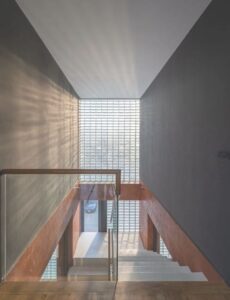
There is a mystical beauty inherent in glass bricks. They create a suggestion of the unknown. For the designer/architect, they help create a bit of wizardry, challenging and defying the objects of which they are made. A wall is not simply a piece of sheetrock when swathed in glass block – it totally transforms space. This is due, in great measure, to the blocks’ inherent flexibility; they can be almost any color, size, shape, or level of transparency, creating many ingenious applications.
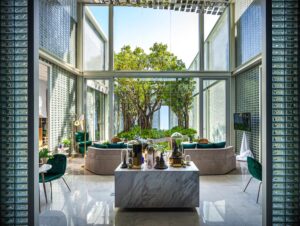
So, what is glass block? “The traditional glass block is not a solid block of glass, but is actually a square block with two glass faces and a mostly hollow interior. Those glass faces can be textured, patterned, frosted, colored or clear. Colored materials can also be added to the middle of the block to create more visual effects. Non-square models are available, too; rectangular blocks can be stacked like bricks, circular blocks can be embedded in a floor or ceiling and trapezoidal units create a shingle-like effect when stacked,” says Tony Kava of Seves Glass Block.
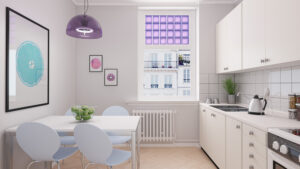
Of the many ways in which this architectural material displays diversity and utility, the diffusion and permeation of light is probably the most noteworthy. Much like artist Dan Flavin’s light tubes, these diaphanous blocks transmit light in widely cast fields. Bringing in the natural or artificial light from a conjoining space, they illuminate an area that would ordinarily be dark from the lack of exposure to exterior windows. This harkens back to their original use in dark factory buildings of the 19th century. As a result, they are highly effective in allowing the light from beyond seep though, achieving the illusion of breadth of space and brightening an otherwise dark and dull room. In providing a balance between design and the laws of optics, they harness light, rendering it ethereal.
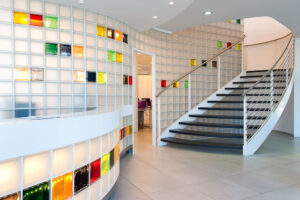
Relatively small in size (6″ x 6, 4 x 8, etc.), when assembled together, they can form straight or curved planes. They range in opacity “from nearly transparent to highly tinted and textured. Glass blocks with a clear smooth face offer high levels of light transmission and visibility. Wavy and fluted patterns maintain high levels of light transmission while allowing for moderate levels of visual privacy,” Tony Kava says. And, they come in a variety of textures: sandblasted, wavy, 3-dimensional, among others. As far as maintenance is concerned, they are extraordinarily easy to clean. Versatility, durability, security, aesthetic appeal, light transmission and better visibility are some of their many advantages.
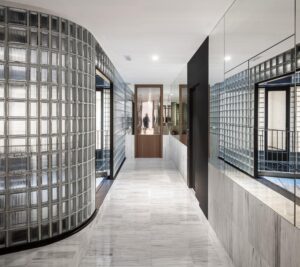
Here are several applications in which this versatile and aesthetic material is used in design:
PARTIAL WALLS: Glass block walls can either be built up to the ceiling or constructed as partial walls. Built as half walls, the light permeates from both the top of the wall as well as through it.
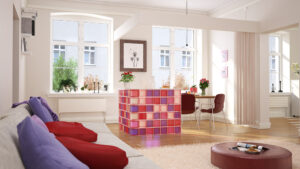
INTERIOR ROOMS / ROOM DIVIDERS: Transmitting 80% of light in both direction, glass block provides great utility in lighting interior rooms that have no exposure to natural light. They add a buoyancy and cheerfulness to the area being lit. Creating a division of spaces while maintaining a breadth of space and light, glass block precludes a space from feeling too small.
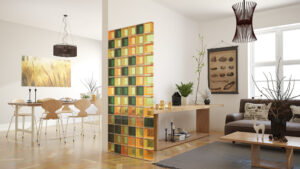
WINDOWS: Glass block can be used in basements or garages to bring light into an interior area where a regular window cannot be utilized, As Seves Glass Block notes, “these windows are used to keep inclement weather, bugs, burglars, noise, and prying eyes out! They provide security, privacy, and thermal efficiency. Because glass blocks bring diffused light from the outside into an interior space, they are utilized for their high thermal insulation values.”

FLOORING: Glass bricks may also be used to create light transmission from above to below by seeping light into a floor below ground without any light exposure to the outside, For a slightly futuristic effect, solar panels can be embedded in the floor block as they are extremely strong and scratch-resistant and can easily be made translucent to prevent any awkward views from below. Blocks used in flooring are different from those used in walls.
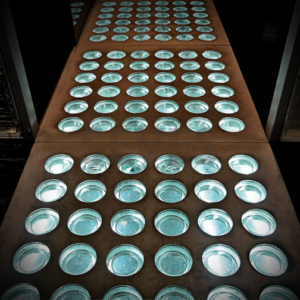
Perhaps the best known use of glass block within the modern era is that used in Pierre Chareau’s Maison de Verre in Paris. The translucent glass blocks on its exterior light up the interior, bringing in an air of clarity, beauty, and mystery. So too, when used in a modern apartment or home of today, glass block fulfills its manifest purpose of enlightenment.

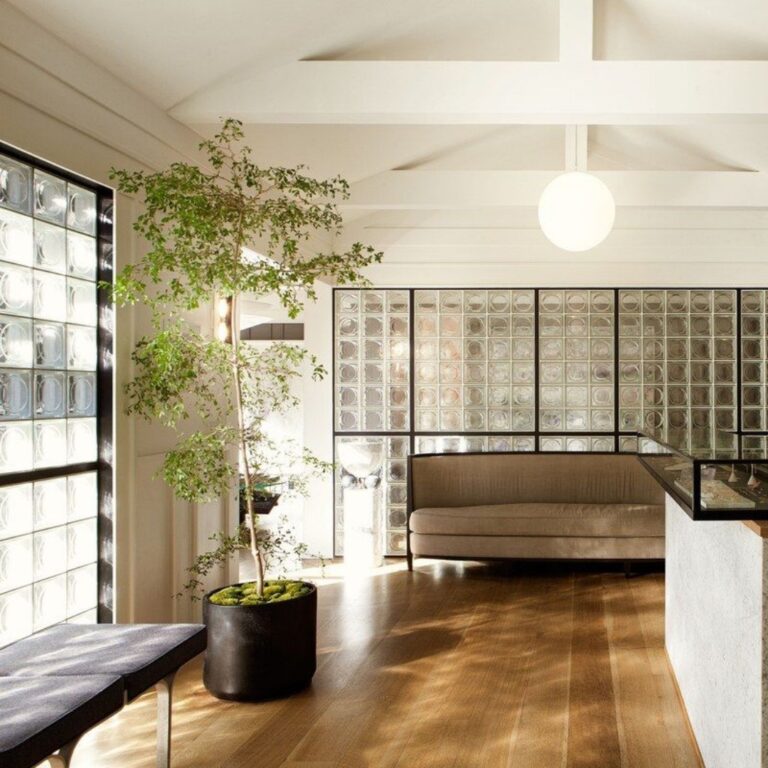
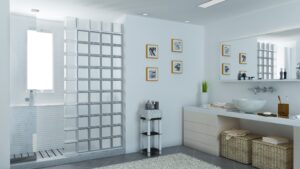
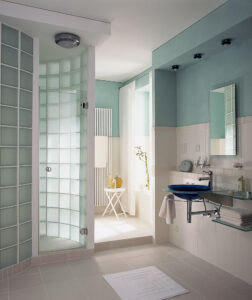
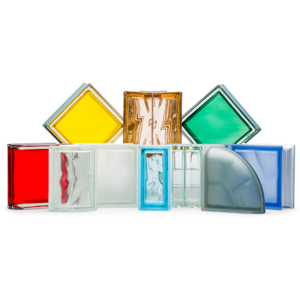
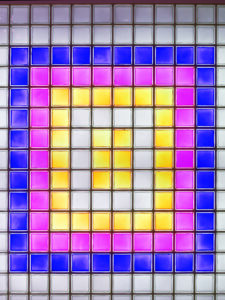
Give us a follow!